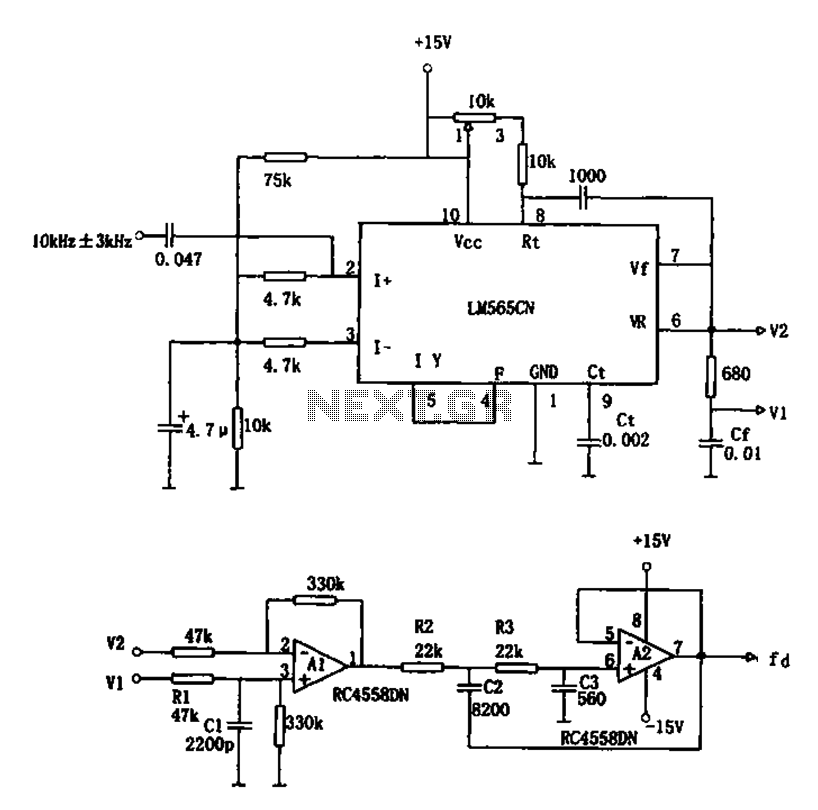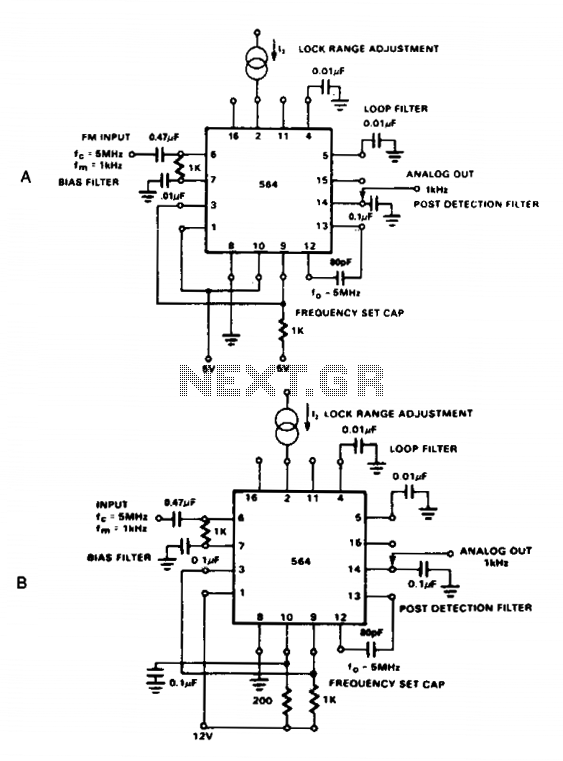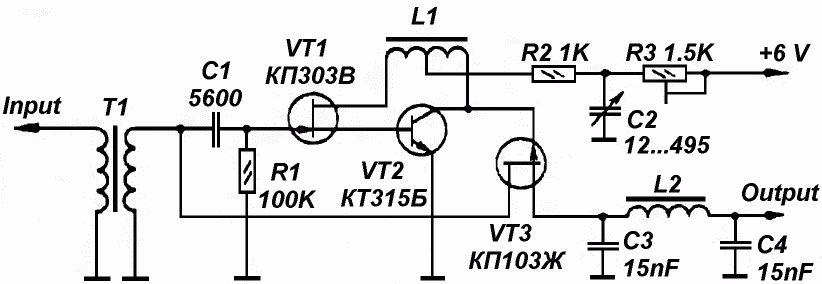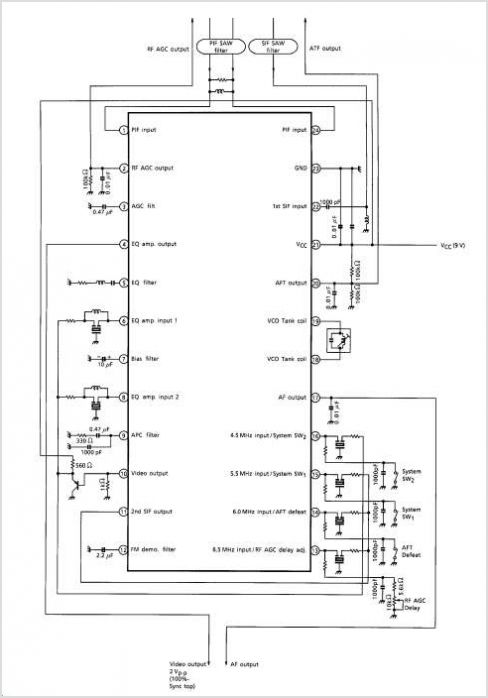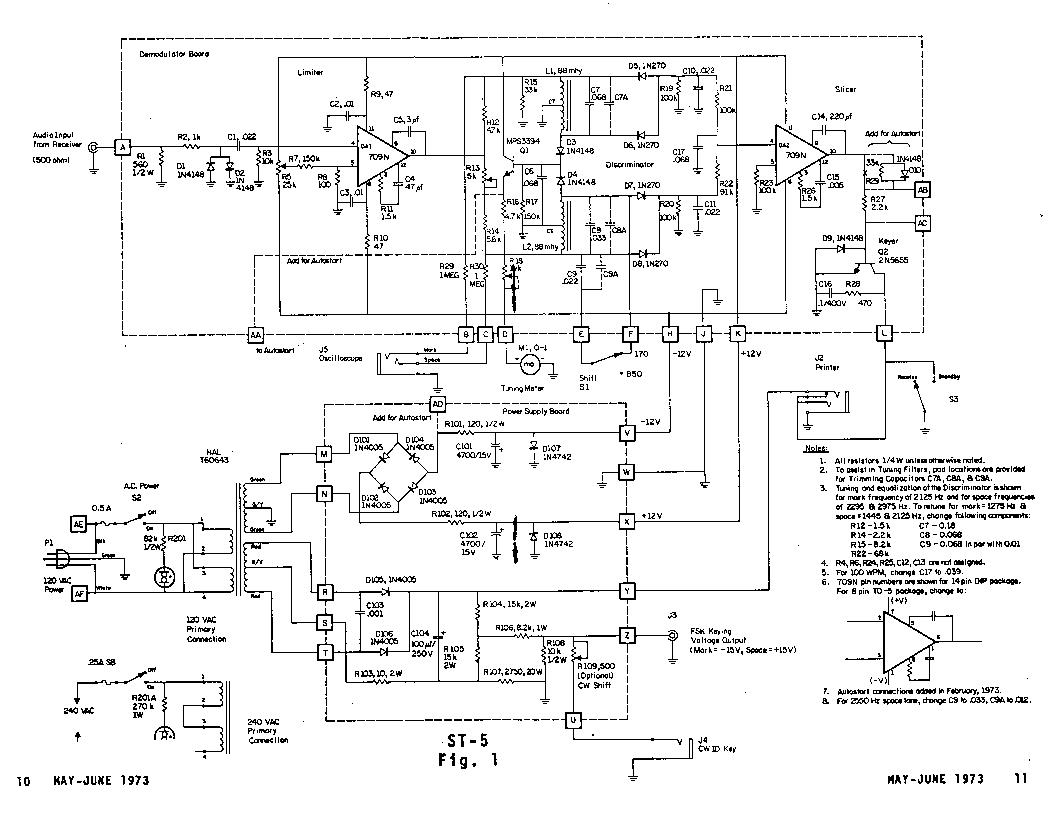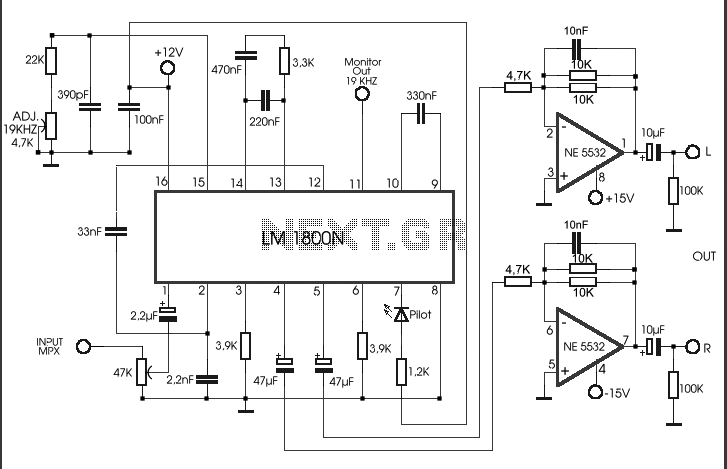
IR Demodulator

The circuit receives a 32.768 kHz infrared (IR) input and produces a logic low output when the input signal is detected. The design consists of three distinct stages: the section up to U1A, the section between U1A and Q3, and the section to the right of Q3. While the operation of the left and right sections is understood, the functionality of the middle section, which is critical to the circuit's performance, remains unclear. Questions arise regarding the overall operation of the circuit and the specific roles of the various gates used. Additionally, there is curiosity about the purpose of the resistor in series with Vcc connected to U1, as well as the role of resistor R26.
The circuit operates by processing a 32.768 kHz IR signal through its various stages to achieve the desired output. The initial stage, which includes components up to U1A, likely serves as a signal conditioning section. U1A may function as a comparator or an amplifier, boosting the incoming IR signal to a level suitable for further processing. The output of this stage is then fed into the second stage, which encompasses the components between U1A and Q3. This intermediate stage is crucial as it likely incorporates logic gates that perform necessary signal processing, such as filtering, shaping, or generating specific logic levels based on the input conditions.
The third stage, located to the right of Q3, is expected to be the output stage, where the processed signal is converted to a logic low state when the 32.768 kHz input is present. This stage may include transistors or additional logic gates that translate the processed signal into a usable output for interfacing with other digital systems.
The presence of a resistor in series with Vcc on U1 is a common design practice to limit the current flowing into the IC, ensuring that it operates within its specified parameters and preventing damage due to excessive current. This resistor can also help in stabilizing the power supply voltage by reducing noise. R26 may serve a similar purpose, possibly functioning as a pull-up or pull-down resistor, depending on its placement in the circuit. Its specific role would require further analysis of the surrounding components and their configurations.
Overall, understanding the middle section's operation is essential for grasping the entire circuit's functionality, as it is likely where critical signal processing occurs that determines the output behavior in response to the input signal.It takes a 32. 768 kHz IR input and outputs a logic low when the input is present. I see 3 distinct stages. everything up to U1A, everything between U1A and Q3 and everything to the right of Q3. I follow the left and the right. but not the center which is where all the magic happens. Can anyone explain the piece in the middle It makes no sense to me. How is this circuit functioning Why do they make use of all the gates Why do they have a resistor in series with Vcc on U1 What purpose does R26 serve 🔗 External reference
The circuit operates by processing a 32.768 kHz IR signal through its various stages to achieve the desired output. The initial stage, which includes components up to U1A, likely serves as a signal conditioning section. U1A may function as a comparator or an amplifier, boosting the incoming IR signal to a level suitable for further processing. The output of this stage is then fed into the second stage, which encompasses the components between U1A and Q3. This intermediate stage is crucial as it likely incorporates logic gates that perform necessary signal processing, such as filtering, shaping, or generating specific logic levels based on the input conditions.
The third stage, located to the right of Q3, is expected to be the output stage, where the processed signal is converted to a logic low state when the 32.768 kHz input is present. This stage may include transistors or additional logic gates that translate the processed signal into a usable output for interfacing with other digital systems.
The presence of a resistor in series with Vcc on U1 is a common design practice to limit the current flowing into the IC, ensuring that it operates within its specified parameters and preventing damage due to excessive current. This resistor can also help in stabilizing the power supply voltage by reducing noise. R26 may serve a similar purpose, possibly functioning as a pull-up or pull-down resistor, depending on its placement in the circuit. Its specific role would require further analysis of the surrounding components and their configurations.
Overall, understanding the middle section's operation is essential for grasping the entire circuit's functionality, as it is likely where critical signal processing occurs that determines the output behavior in response to the input signal.It takes a 32. 768 kHz IR input and outputs a logic low when the input is present. I see 3 distinct stages. everything up to U1A, everything between U1A and Q3 and everything to the right of Q3. I follow the left and the right. but not the center which is where all the magic happens. Can anyone explain the piece in the middle It makes no sense to me. How is this circuit functioning Why do they make use of all the gates Why do they have a resistor in series with Vcc on U1 What purpose does R26 serve 🔗 External reference
